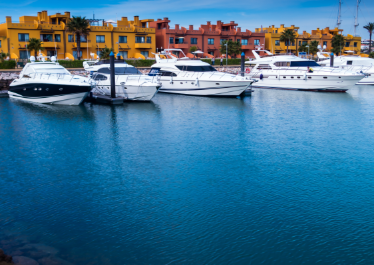Marine HMI: Is this the end of small HMI in favor of more connected devices?
Historically, in the marine industry, most of equipment manufacturer are offering an HMI in the form of a screen to interact with the device. Originally reserved for sensitive equipment such as engine or genset today most of devices (such as aircon, watermaker, heater, lights, charger, inverter…) are offering a smart control panel. As a result, we quickly found ourselves with as many screens or displays as there are devices on a boat. This multiplication of screens became unmanageable and the trend was reversed. Now, products are less and less associated with an HMI, but are increasingly connected to send their operating information to the main navigation displays. These MFD (Multifunction Displays) are the eyes of the boat, and today they provide real-time information on the operation of each piece of equipment on board. So, are we seeing the end of HMIs in the boating industry?
IHM: Advantages of HMI
The greatest advantage of an HMI is the user-friendliness of the graphical interface. The graphical interface contains color coding that allows for easy identification (for example: red for trouble), as well as pictures and icons which allow for fast recognition, easing the problems of language barriers.
On board a boat, HMIs can be found on many equipment. Dolphin's PRO TOUCH battery chargers, for example, incorporate TouchView, the best HMI on the market as standard equipment, to give boat owners a perfect battery monitoring experience. Thanks to this touch screen, users can easily monitor the charger in terms of charging current, selected charging curve, charging phase (boost/absorption/float) and maximum power output. A very useful control panel, therefore, to be alerted in case of alarms.
As you can see from this example, the usefulness of HMIs is not to be demonstrated. However, the multiplication of screens on board boats can complicate the user experience for boaters. For this reason, the trend is to design more connected products to get rid of screens.
Not to mention that today, we are all using smartphones that can in turn be transformed into remote HMIs, provided that the equipment communicates via Bluetooth to send information back to the phone with dedicated app’s.

IHM: how connected devices are replacing HMI screens
HMIs are tending to disappear in favor of smartphones and MFD’s, on which the various onboard equipment sends back information. CAN bus, NMEA, Bluetooth, Wifi... To be up to date, equipment must be able to communicate via different technologies.
Complementary protocols, NMEA 2000 and CAN Bus, simplify electronic communication on board a boat. The principle of NMEA is to ensure that all devices on board a boat can communicate with each other, even if they are of different brands, while CAN Bus consists of assigning identifiers to each device to avoid having to wire dedicated lines for each information. These two protocols are essential to the good communication between the different devices.
On the other hand, the Wi-Fi and Bluetooth networks allow to communicate directly with the users' smartphone or tablets.
Aware of this need in terms of communication, the marine specialist Dolphin Charger offers connected products in addition to smart HMI.
The PRO TOUCH chargers shown above are smart devices that can communicate thanks to a standard CAN bus interface. In order to be connected to any modern onboard system, such as Scheiber's Navicolor, Naviop Loop or Böning, future PRO TOUCH chargers will also be NMEA compatible (the NMEA2000 option is available from one unit). Ultra-efficient and robust, the chargers offered by Dolphin Charger are perfectly in line with the trend to reduce HMI, without losing communication. Want to know more about it? Contact us now!


